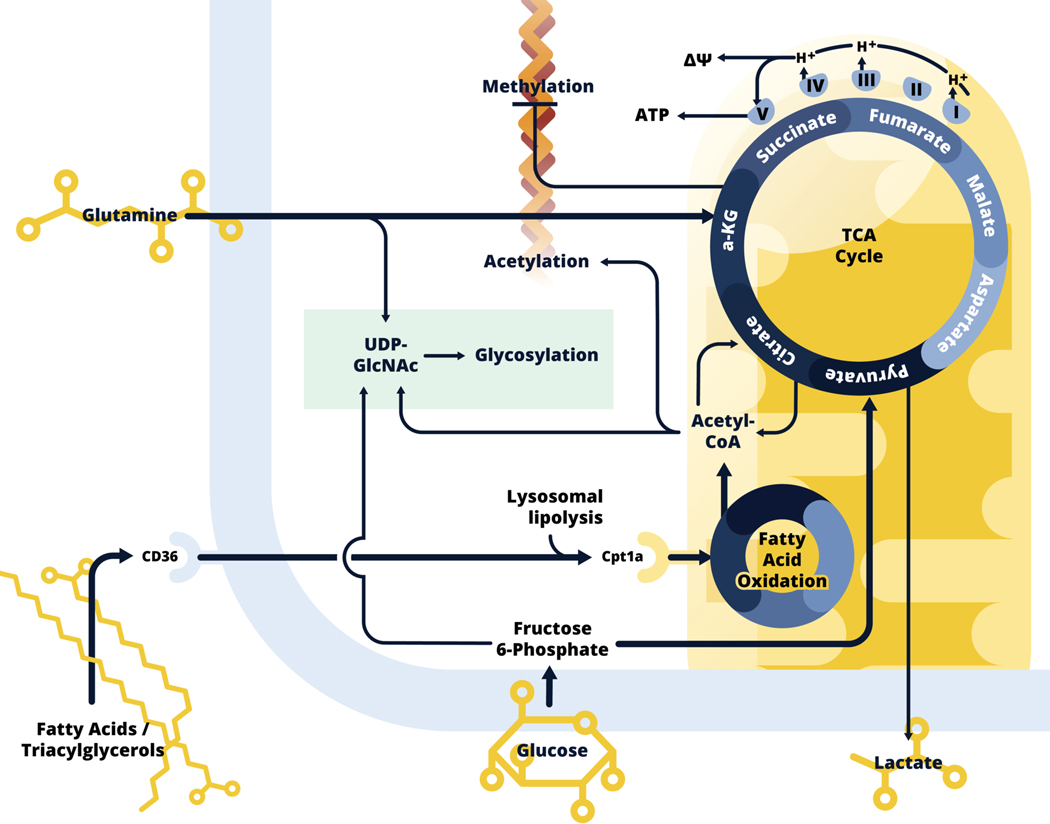Figure 2.
Alternatively activated macrophage metabolism.
Alternatively activated macrophages use fatty acids, glutamine and glucose to fuel the TCA cycle, and respiration is generally increased in these cells. Exogenous fatty acids and triacylglycerols are taken up by CD36, and lysosomal lipolysis is used to generate fatty acids for fatty acid oxidation (FAO). Activated fatty acids enter the mitochondria, mediated by Cpt1a, to engage in fatty acid oxidation, which generates acetyl-CoA, to contribute to the TCA cycle. Glucose carbon is also critical for citrate synthesis. Unlike in inflammatory macrophages, Idh is expressed in alternatively activated macrophages, and in addition to being used for the production of acetyl-CoA, which is used for histone acetylation, citrate is converted to α-KG, which is also generated from glutamine by glutaminolysis. α-KG inhibits DNA methylases, and therefore the process of methylation, and in this way facilitates increased expression of genes and downstream processes associated with alternative activation. α-KG cycles through the TCA cycle by conversion into succinate, fumarate, malate, aspartate, and eventually back to citrate. These steps of the TCA cycle, as well as FAO, generate NADH and FADH<sub>2</sub> (not shown) which can donate electrons to Complex I and II of the electron transport chain (ETC), while complex I, III and IV pump protons into the intermembrane space, to generate mitochondrial membrane potential (ΔΨ), which provides the motive force for ATP generation by complex V. The cells integrate fructose 6-phosphate (Glc), glutamine (N) and acetyl-CoA (Ac) for emphasized synthesis of UDP-GlcNAc, a sugar donor for glycosylation (green).

